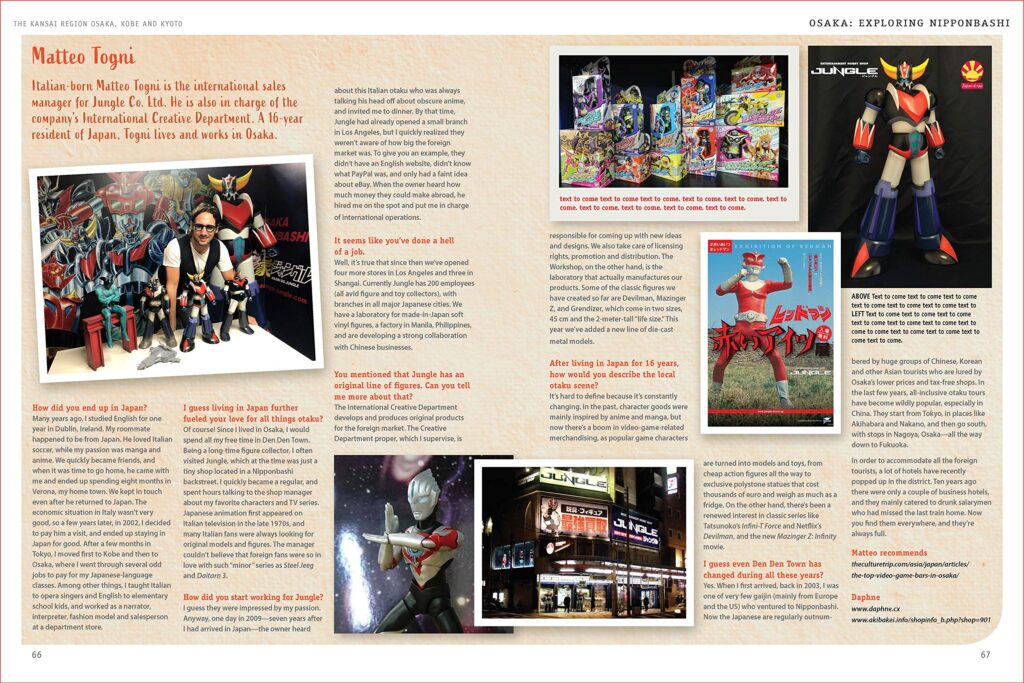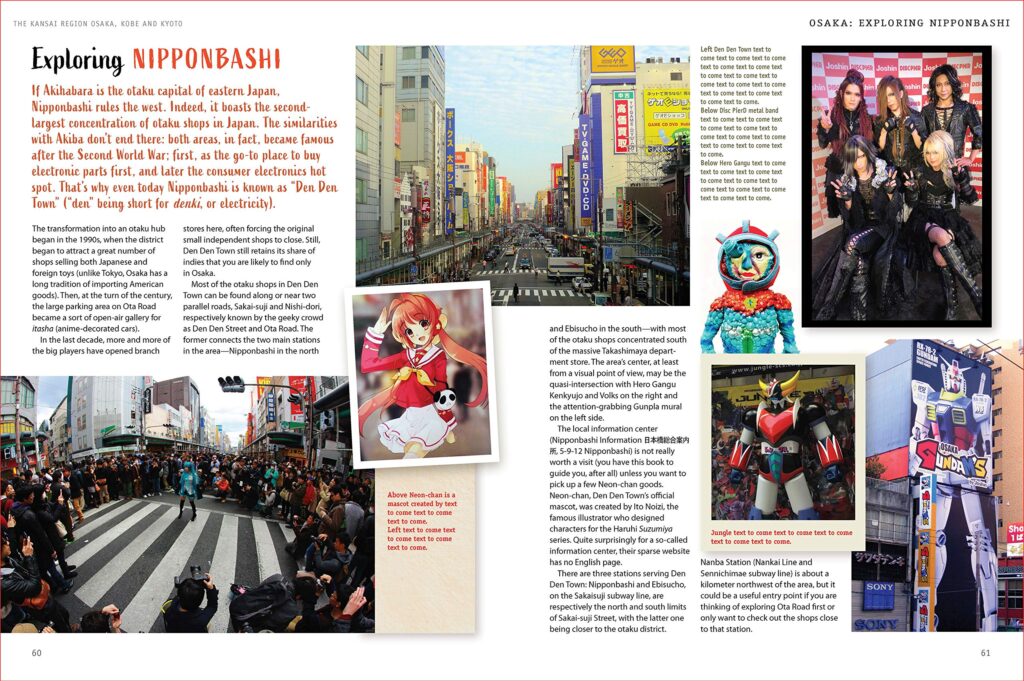Geek culture, con life, and having a hobby all have some crossover within a Venn Diagram. Otaku is a Japanese word that has one meaning, with countless degrees of intensity. If you look it up online the meaning is “a young person who is obsessed with computers or particular aspects of popular culture to the detriment of their social skills”. Yikes, that doesn’t sound like a compliment, does it? Otaku Japan is a book that travels that county, documenting interesting sites on all four major islands. Also, as a former resident of Japan, I would take issue with the internet’s technical definition of otaku, but more on that in a moment.

I don’t see otaku as a pejorative. For me, I class the word in the same category as fanboy or fangirl. And let’s not forget that fan is an abbreviated version of a fanatic, which itself has more devoted or extreme connotations. So, Otaku Japan is a guidebook on pop culture festivals, museums, places of interest, cosplay, manga/comic book stores, and more that you can visit when you go to Japan.
From anime studios and the otome who enjoy them to shonen manga and the V-cinema that they derive from it’s all here. Otaku Japan is a surprisingly deep dive into the subculture that drives industries and is known around the world. This is good to know because aspects of otaku are great for kids, whereas some elements definitely skew older to teens or young adults.

There’s an otaku glossary at the back of the book that is also very detailed. It contains dozens of words that are commonplace in the community, but may not be fully known to non-Japanese audiences. Also, as with any great book on geek life or cosplay, Otaku Japan is loaded with photographs. There are hundreds of photos of stores, drinks, cosplay, theme parks, cityscapes, and more that will make readers curious to visit Japan.
At its heart, Otaku Japan is actually more of a tourist book for those people who are into manga, anime, cosplay, and the like. The book isn’t designed to introduce people to all things otaku. If you have an interest in these things and are curious about visiting Japan, then this book is for you. It starts out with a very broad overview of otaku in Japan and from there goes through the regions of the country. Obviously, Tokyo is a massive megacity and the book does spend about 25% of its time exploring the capital and it’s still not enough. Thankfully the rest of the country, like Kyoto, Osaka, Kobe, Sapporo, Hiroshima, Fukuoka is also explored.

The geographic regions are spotlighted with a map and a legend that shows where some of those things are, as well as, major streets or landmarks. This is incredibly important because if you’re going to use Otaku Japan then you’ll need things to use as a reference. While I wholeheartedly endorse anybody visiting Japan for any reason, trying to find a niche store in any major city there could be challenging, but still very fun. There are some exterior shots of a couple of stores listed in the book, but not too man.
The reading level for Otaku Japan is appropriate for middle school and up. Having said that, the book’s intended audience is those adults who might travel to Japan. It could serve as a great planning guide for those families who are taking a geek trip overseas, college kids who love anime or even young adults who want to work in the industry. The book does not guarantee jobs, but there are two pages that detail people who work in anime or the video game industry. There’s also a page of links and resources for those who might be serious about working there. Much like the rest of the book, it realistically lets readers know the pay, environment, and job availabilities in those industries.
Otaku Japan is by Gianni Simone and available on Tuttle Publishing.
There are affiliate links in the post.





 Facebook
Facebook Twitter
Twitter Flickr
Flickr GooglePlus
GooglePlus Youtube
Youtube